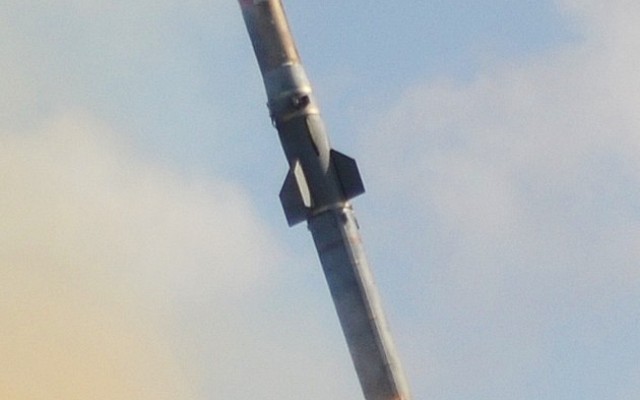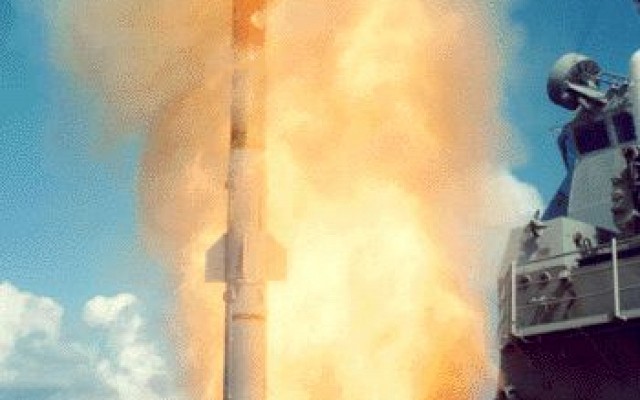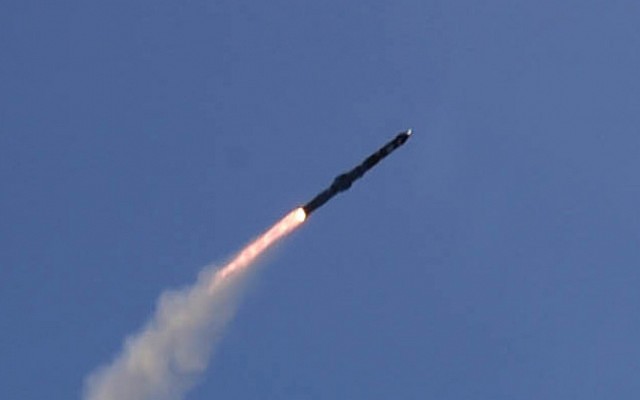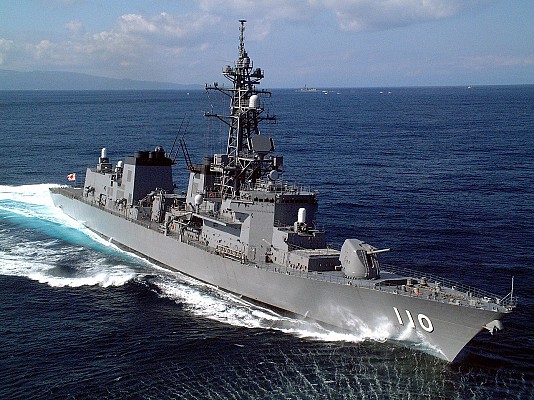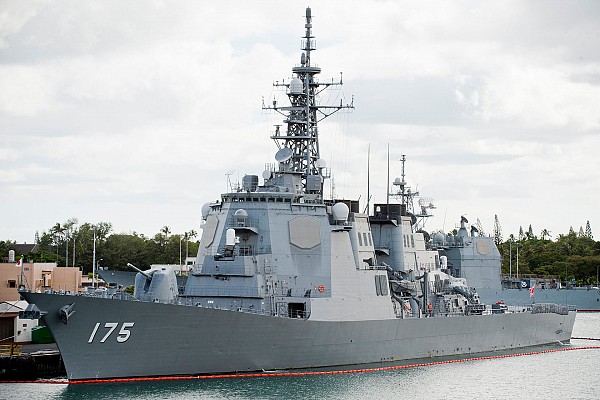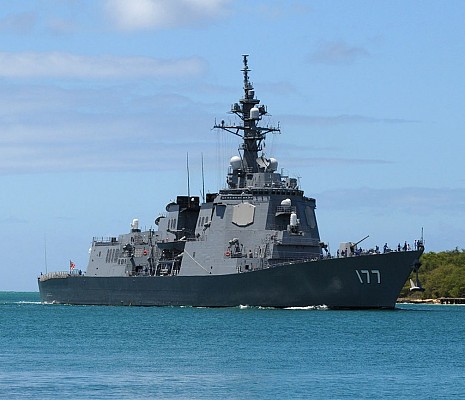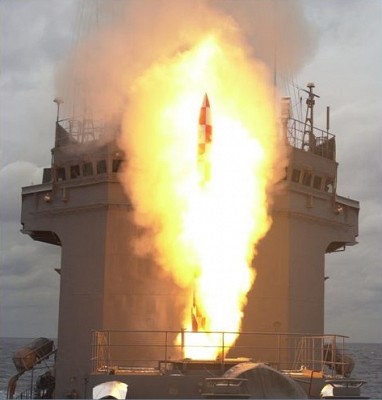RUM-139 VL-ASROC
Vertical Launch ASROC
Overview
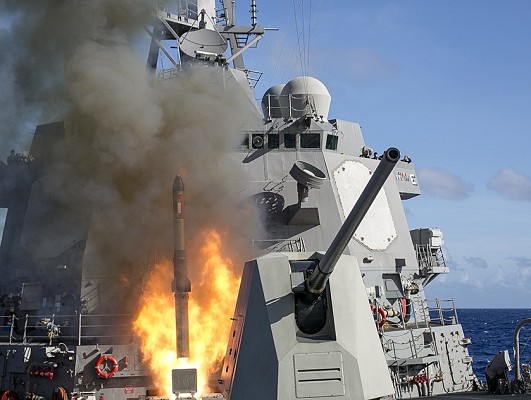
RUM-139 VL-ASROC
RUM-139 VL-ASROC being launched from an American Arleigh Burke class destroyer in 2014.
Source: US Navy -
© Public domain
2010 for RUM-139C
Japan
Description
Introduction
The RUM-139 VL-ASROC is a modern era naval anti-submarine warfare system of United States origin. This missile provides standoff anti-submarine warfare capabilities to surface vessels.
Design
The VL-ASROC is a rocket that drops a parachute retarded lightweight torpedo at a predetermined area, providing standoff range to engage enemy submarines. The VL-ASROC is launched vertically from the Mk 41 vertical launch system, which is also used with various other types of missiles. A solid propellant booster section provides initial altitude and velocity. A second solid propellant booster rocket propels the missile in flight. At a pre-calculated point the torpedo payload is released.
Firepower
A single 324mm lightweight torpedo is the lethal cargo that the VL-ASROC carries. In early models this was the Mk 46 Mod 5 NEARTIP torpedo. A version with Mk 50 torpedo was tested and cancelled. The Mk 54 torpedo is carried by the latest iteration. Operational range of the VL-ASROC is 22 km. Some sources indicate a range of 28 km.
Users
The two main operators of the VL-ASROC are the US Navy and the Japan Maritime Self-Defense Force. Both navies employ the RUM-139 VL-ASROC in large numbers on their destroyers. In US service there are reportedly four missiles per Arleigh Burke class destroyer, although mix of missiles can be altered based on mission profile.
Variants
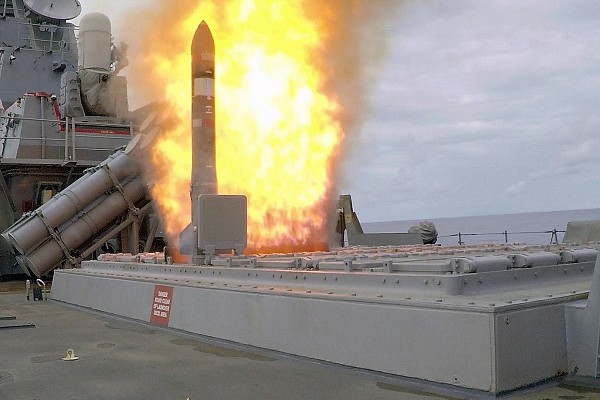
RUM-139 VL-ASROC
RUM-139 VL-ASROC being launched from an American Arleigh Burke class destroyer in 2016.
Source: US Navy -
© Public domain
List of VL-ASROC variants
Details
Media
Platforms
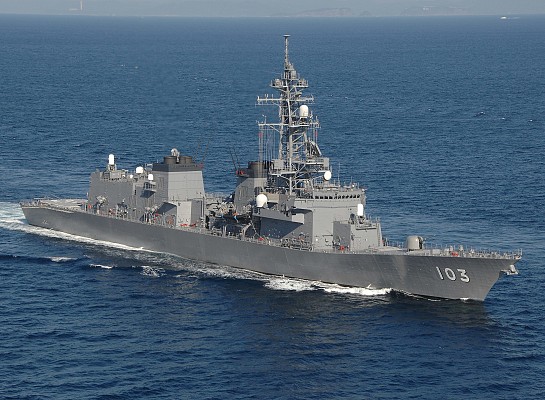
Murasame class
Japanese class of destroyer, 9 ships in class. Forward 16-cell Mk 41 VLS specifically fitted for RUM-139 VL-ASROC.
Ticonderoga class
American class of cruisers. Carried by the late model Ticonderogas with Mk 41 VLS systems.
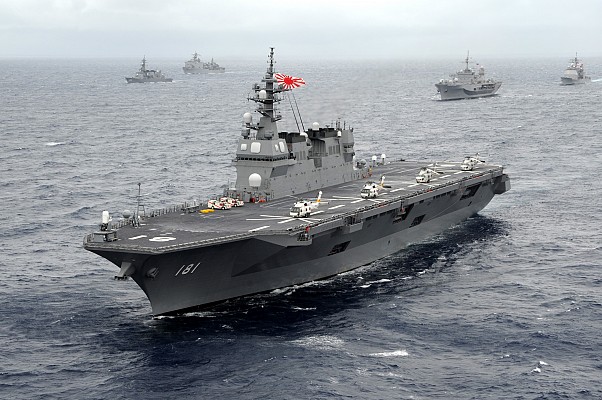
Hyuga class
Japanese class of helicopter carrier, 2 ships in class. Normally 12 out of 16 cell Mk 41 VLS to be fitted with VL-ASROC.
Related articles
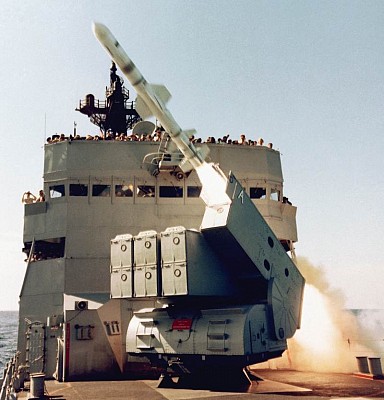
RUR-5 ASROC
The VL-ASROC is the successor of the RUR-5 ASROC, a similar shorter range weapon that required an octuple launcher.
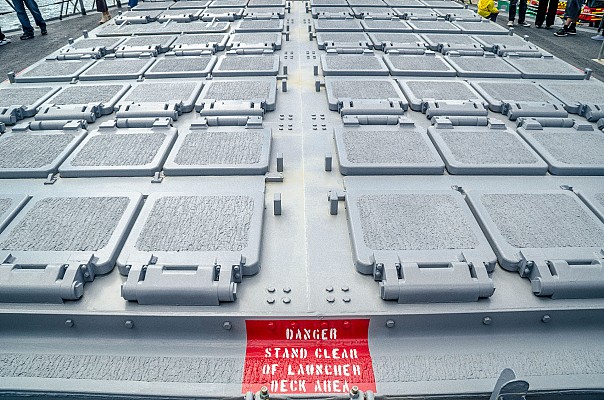
Mark 41 VLS
The VL-ASROC is launched from the Mark 41 vertical launch system. VL-ASROC requires a Tactical length or Strike length VLS.
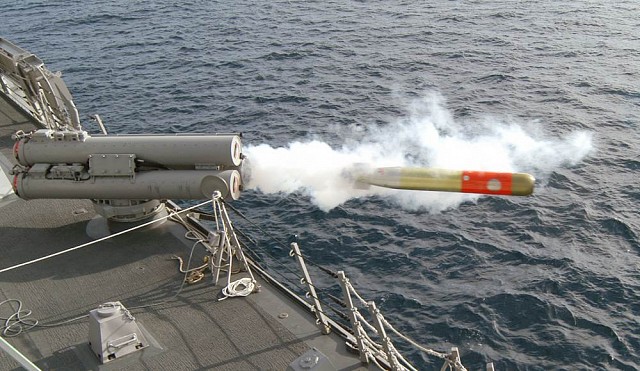
Mk 46
The Mk 46 Mod 5 torpedo is the payload of the RUM-139A and B variants of the VL-ASROC.
